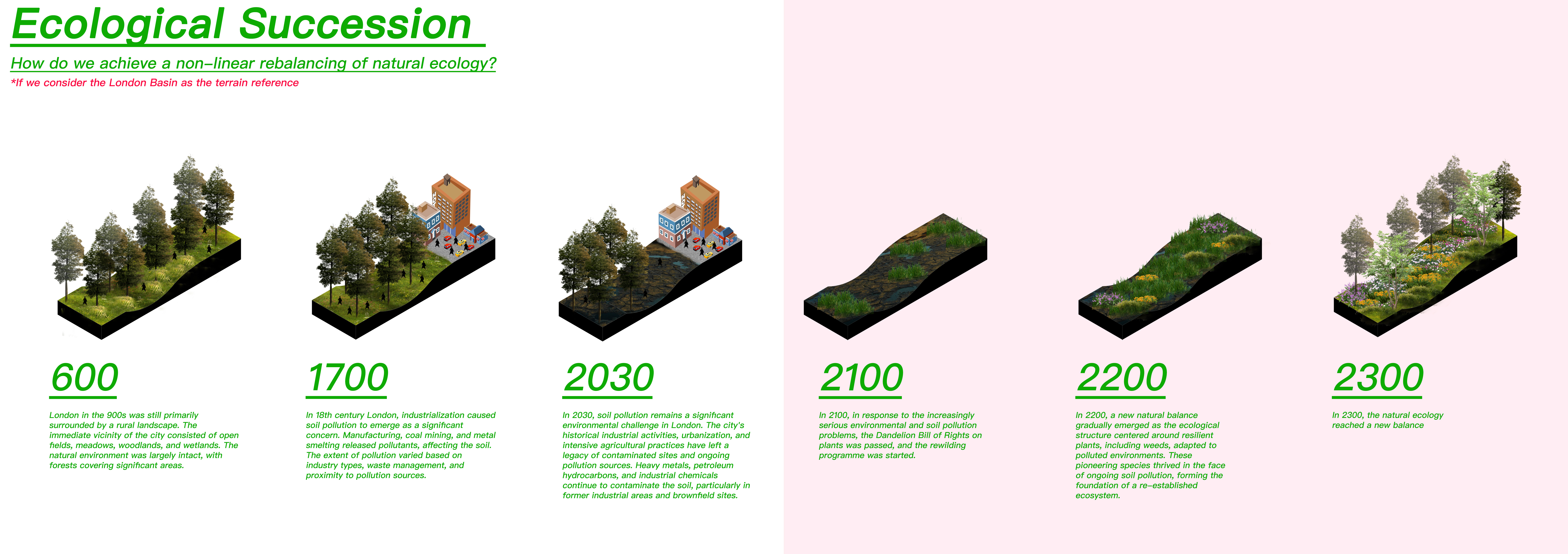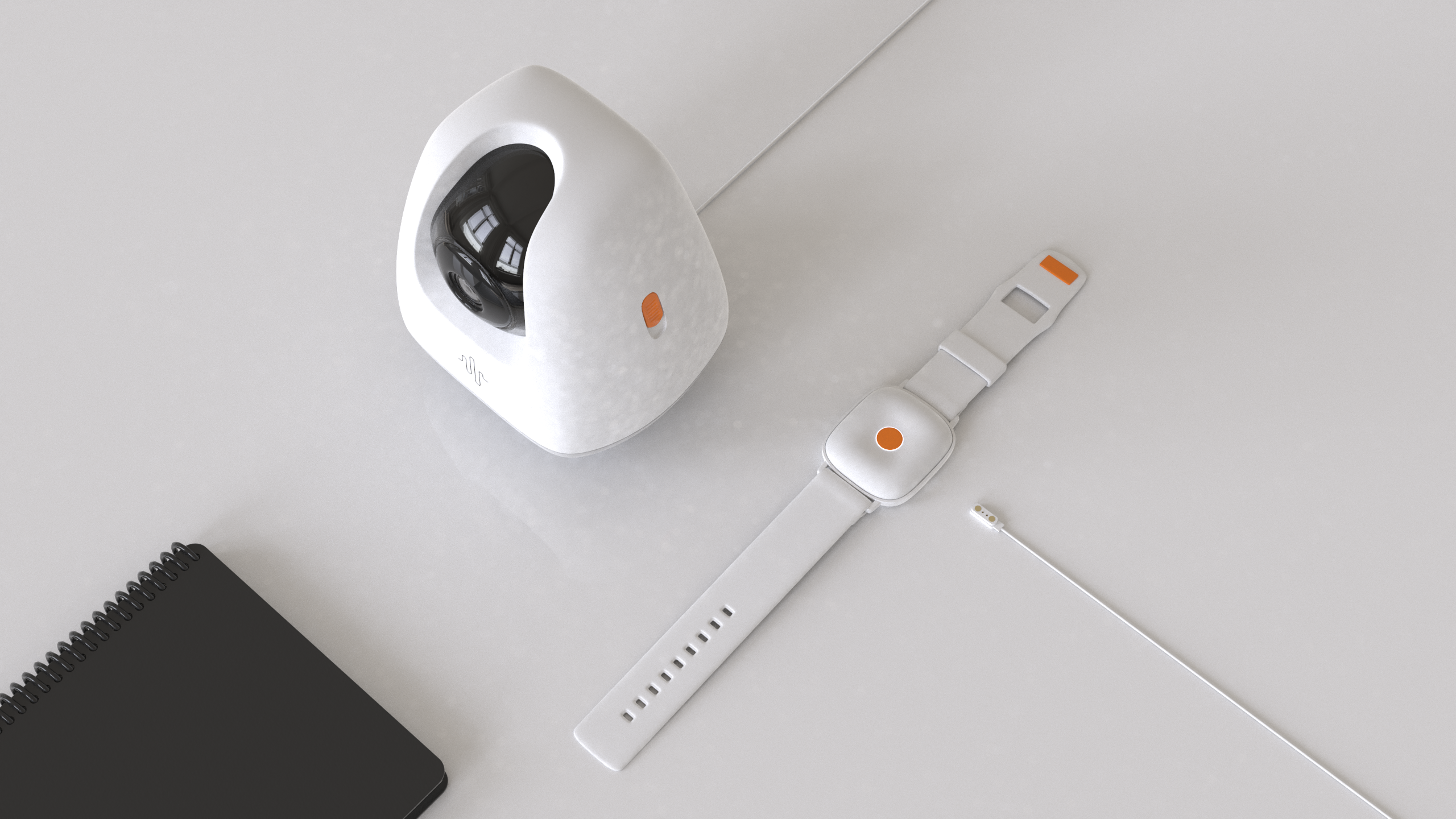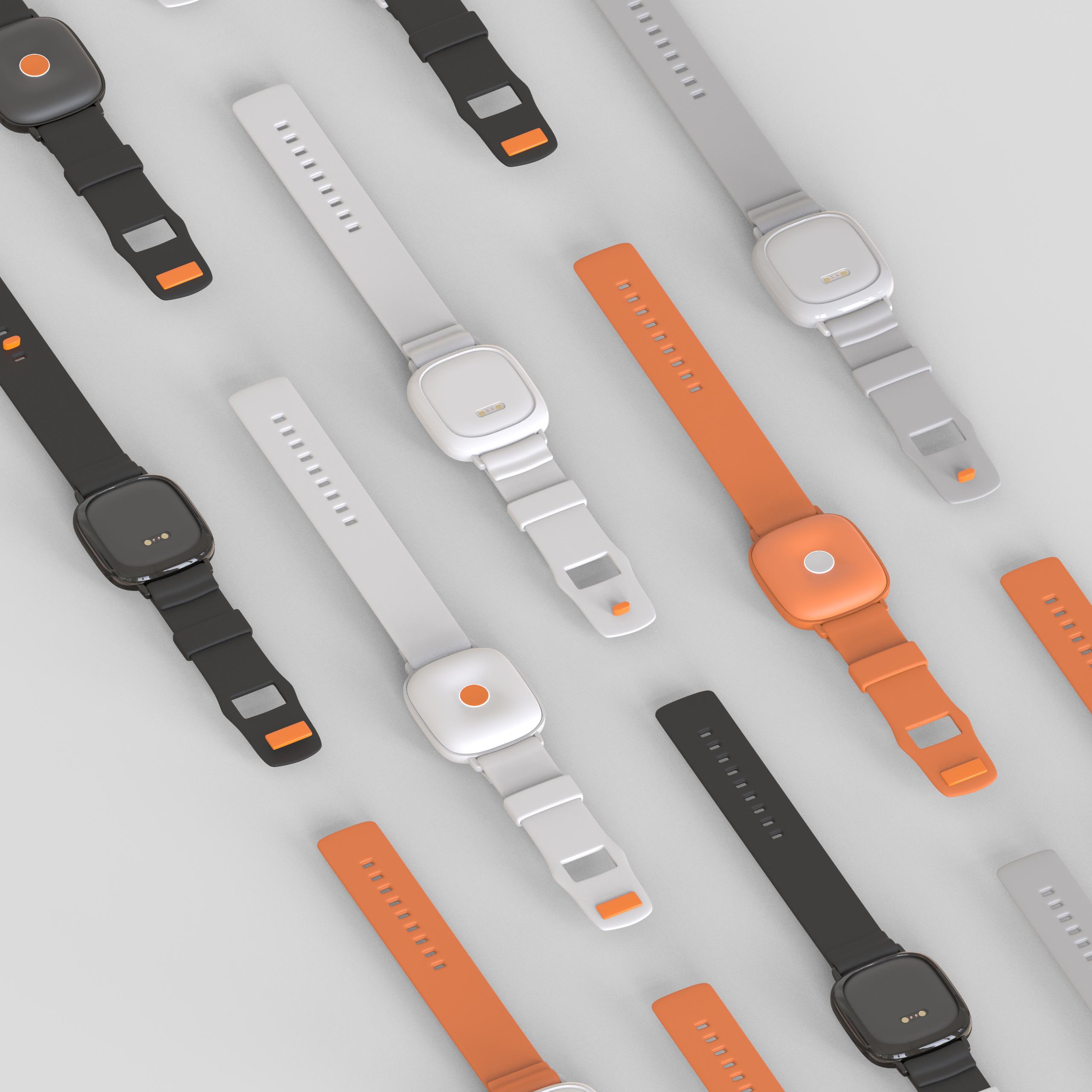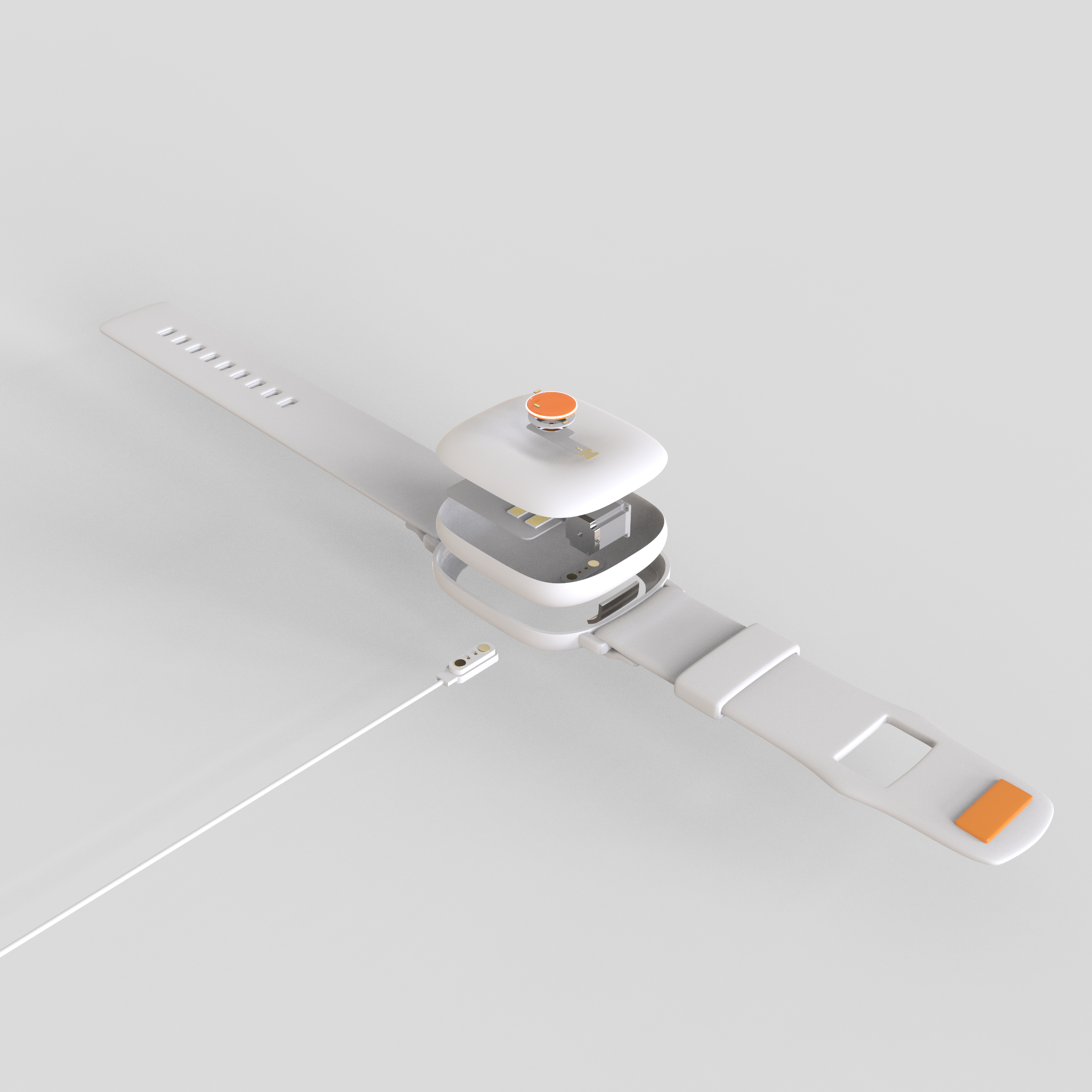“Dandelion”
2100
2023If every seed had the freedom to fly and suitable growth.
Ziqunhua's "Dandelion" installation attempts to explore the possibility of inclusive design centered on plants. "When plants are the protagonists of the city, is it possible for us to apply technology to help different plant individuals achieve the same freedom of rights? Such as flying and find suitable habitat"
The installation is divided into two parts: a 3D-printed wind appendage that looks similar in principle to sycamore seeds,and a wind-powered automated assembly system (wilding infrastructure) that collects the seeds and attaches them to these wings.
The assembly system is adapted from complex industrial vibrating feed bowl machinery. In a futuristic scenario,biodegradable fabric catch nets collect possible organic matter.
Then the vibration is generated under the action of the wind and the screening and sorting of materials is thus completed.
Meanwhile another feed bowl sorts the 3d printed wind attachment.
The two meet at the port and complete the piggyback.
Finally, the hooper used to collect the assembled parts will complete the flight (seeding) in the appropriate wind direction and wind force to release the parts, and finally reach the most habitable habitat.
︎Equipment instruction file
︎Flying Function video
︎Flying wind

Buzz
2021
Inclusive design of instrumental ensemble practice for visually impaired people under 25
Using artificial intelligence to identify and analyse the visual cues in the instrumental ensemble scene and then convert the information into corresponding vibration signals, which will ultimately help shorten the ensemble. The use of artificial intelligence to identify and analyse the visual cues in the instrumental ensemble scene and then convert the information into corresponding vibration signals will ultimately help shorten the ensemble practice process for the visually impaired and give sighted people some inspiration to learn the instrument.
More details in this link 👀️






MUTANT FACTORY
2022
(Teamwork)
Utilizing GPS technology to effectively track the distribution of fish populations, the future outlook regarding the survival and variation of fish quantities is deduced based on existing pollution data. In the future, individuals will be able to track real-time variations in fish populations at desired marine locations through this platform. This will allow them to immerse themselves in corresponding marine environments and experience the variations in fish population morphology using AR/VR technology. The project employs VR game modelling to simulate the evolution of fish populations and marine environments, enabling people to experience these monumental changes within the gaming process for better empathy.
Full Presentation 💬️
Interface Prototype 🤖️
